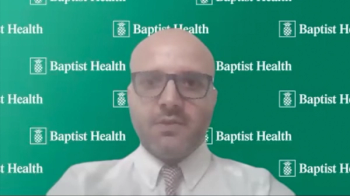
Who's Coding Whom?
My practice has been concerned that we physicians were not maximizing our “coding potential”; that is, we were not receiving as much remuneration for each cancer patient visit as Medicare permits under its guidelines. Therefore, the practice hired a company that specializes in teaching physicians how to get more. This company is part of a newly minted industry that does nothing else.
Check any survey gauging patient satisfaction, and the number one complaint is apt to concern the wait they and their families are forced to endure between the time they arrive for their scheduled appointments and the time they are actually seen by their doctors.
Richard Rosenbluth, MD
While there are many reasons for this-some justifiable, others not so much-there is no question that modern-day practices compel physicians to engage in far more time-consuming activities that have nothing to do with patient care than ever before in history.
Last week, for example, I was required to adjust my schedule to allow time for a mandated webinar on billing. Actually, “billing” is what we used to do once upon a time. My webinar was on “coding.”
My practice has been concerned that we physicians were not maximizing our “coding potential”; that is, we were not receiving as much remuneration for each cancer patient visit as Medicare permits under its guidelines. Therefore, the practice hired a company that specializes in teaching physicians how to get more. This company is part of a newly minted industry that does nothing else.
When I began my oncology practice, my billing procedures were not very different from those used by the family practitioner who saw me as a child in the Bronx. My office, like those of my colleagues, had two charges-one for an initial visit, or consultation, and the other for follow-ups. While my old family practitioner expected to be paid in cash, my secretary handed my patients insurance forms to be filled out, but they were not terribly onerous.
I well understood that most patients would, from time to time, require a more intensive follow-up visit than usual. However, in my calculus, I reasoned that by charging a single fee for the service, things would undoubtedly even out in the end. Some follow-up visits would be brief, others would be longer, but, ultimately, the overall cost of care would be fair to me, as well as to my patients.
Even in my early days as a physician, there were Medicare code numbers for various services, including, paradoxically, services for which Medicare would not pay, such as phone calls. Nevertheless, my system worked. My patients were content, and I made a decent living.
In 1995 and 1997, Medicare issued new, increasingly complex guidelines for billing and coding. Friends in high places have told me that this was a product of the government’s suspicion that physicians are inherently dishonest and overpaid. Therefore, the government was no longer content to have physicians explain what services were provided. The new guidelines laid out in painful detail how services must be documented in the history, physical examination, and medical plan in order to justify one of the five so-called levels of care deserving remuneration.
The guidelines’ bureaucratese is ideally suited to the government auditors who now threaten to descend on all practices throughout the country to ensure strict adherence to ever-increasing rules and regulations. The auditors, mostly nonphysicians, use a point system to judge compliance. If the points don’t add up, payment is denied for the service, or the service itself is down-coded.
The purpose of the webinar I took was to ensure that I, as a physician, understand how to complete an electronic note, including all those very details that should guarantee sufficient points to satisfy any auditor who might visit our practice.
There are several, I am sure, unintended consequences to these changes in record-keeping that are worth noting. First, in an already busy practice, the care and detail required to complete each electronic note will take precious time away from patient care. Moreover, as anyone who has ever consulted electronic medical-record notes will be aware, these transcriptions are very long. To meet the government’s requirements, they contain numerous templates to be filled in with duplications of history and data. Trying to discover a consulting physician’s impressions and plans for a patient is often like hunting for the proverbial needle in the haystack.
I remember the time when a seasoned hematologist would begin his consultation note with a comment such as, “this patient has polycythemia vera,” and then he would complete his notes on the patient’s history and physical.
It would be nice to return to those simpler times, but it’s not very likely. All those government workers overseeing our practices have strong unions guaranteeing their jobs. For the present, I will be studying my webinar notes until I get them down pat.
Newsletter
Stay up to date on recent advances in the multidisciplinary approach to cancer.


















































































